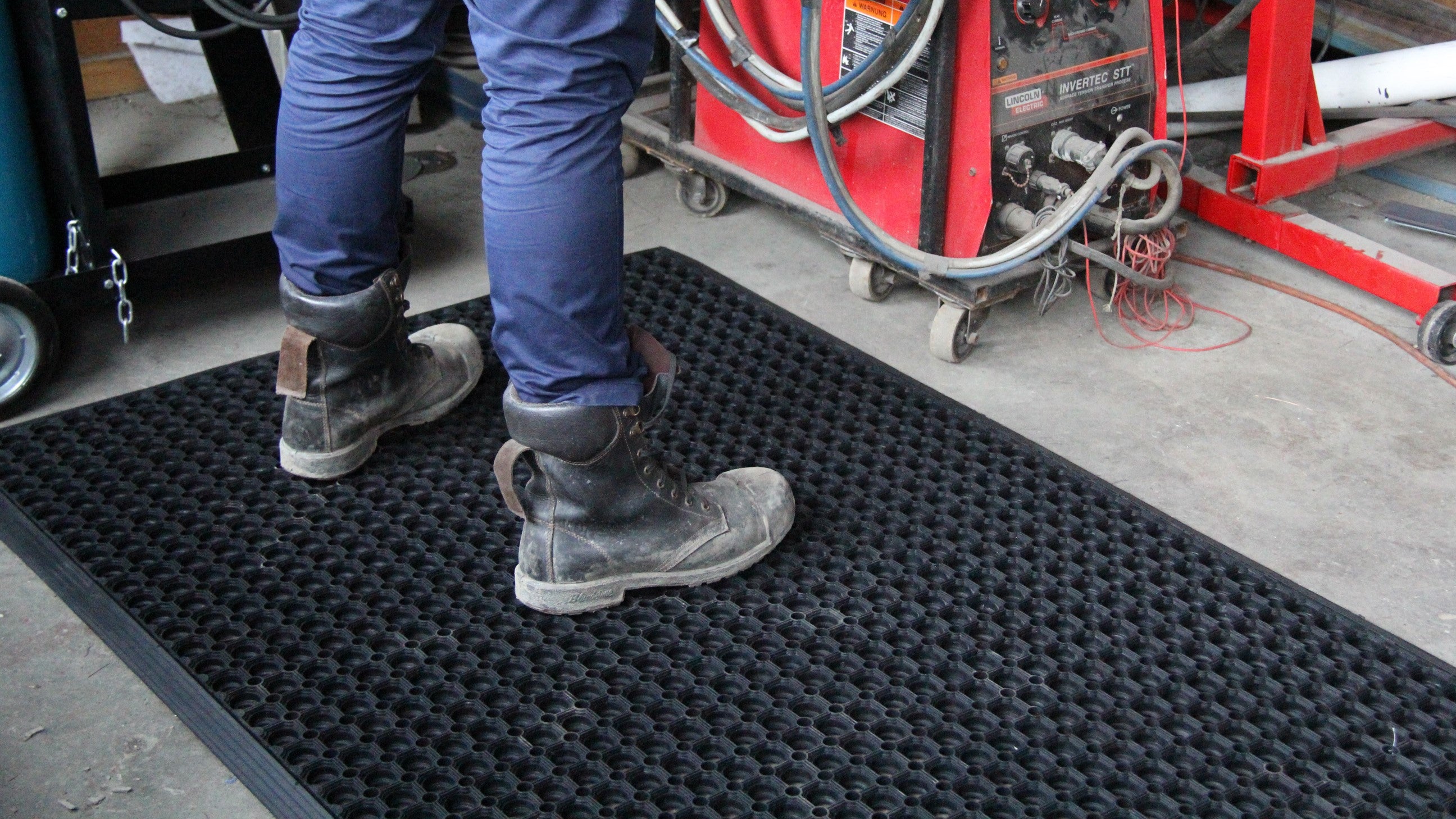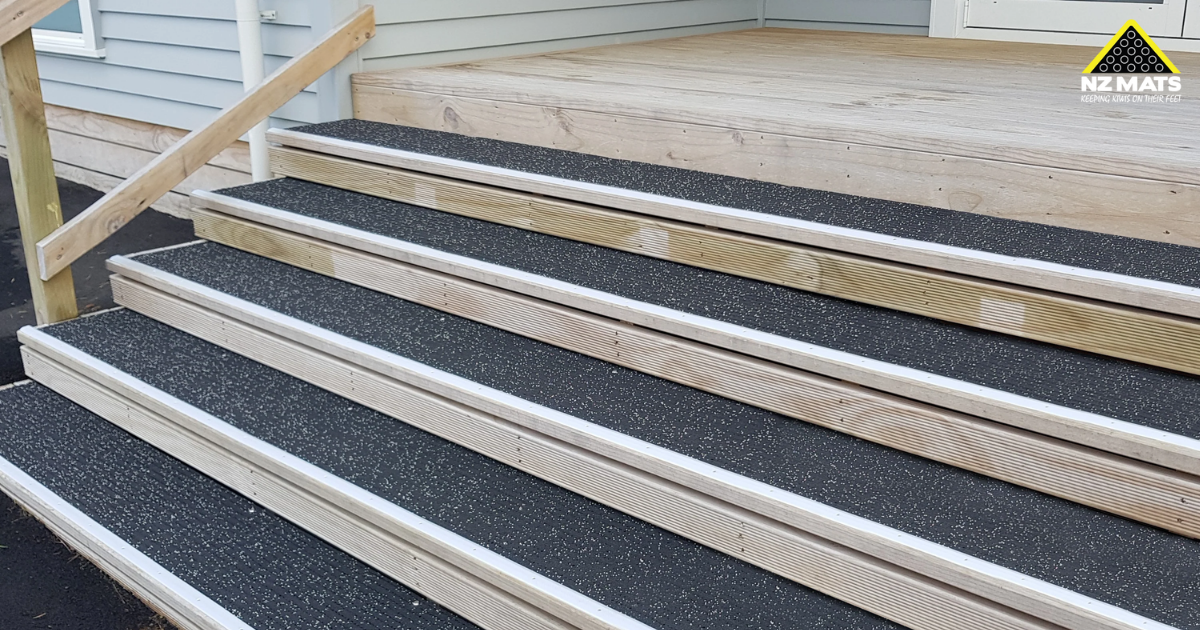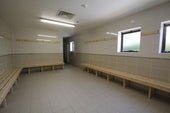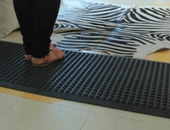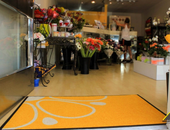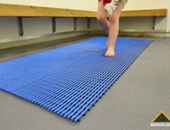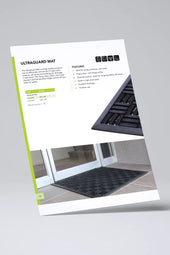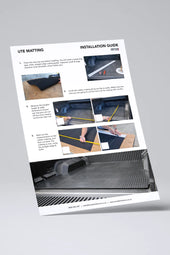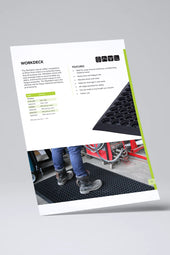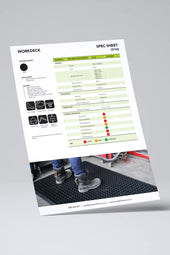Campus life begins long before the lecture starts. For students, walking through the door often sets the tone for how they will feel and function throughout the day. What many people overlook is how something as basic as a floor mat can influence that experience. A well-placed mat might seem minor, but it plays a part in how calm, focused, or connected students feel the moment they step inside.
Whether it is the first week of orientation or the middle of exam season, thoughtful matting solutions can contribute to more than just safety. They support mental well-being, reduce distraction, and send a quiet signal that the campus is a place where students matter. Below are thirteen practical ways the right university matting can help shape students' mindsets without students even noticing.
1. A Clean Entrance Helps Students Arrive Feeling Calm, Not Flustered
A tidy, dry entrance sets the tone for the space that follows. When students step onto a clean mat instead of a puddle or grit-covered floor, they are less likely to feel irritated or distracted. Wet or messy entryways create discomfort that lingers.
Clean, dry floors also reduce tension between students and facilities staff. It builds a shared sense of respect for the building from the start of the day. This subtle order at entry points helps students arrive with a clearer head, ready to focus on the next part of their schedule.
2. Branded Mats Create a Sense of Belonging from the First Footstep

Visual identity plays a role in connection. When students see their university logo underfoot as they walk in, it reinforces that they are part of a larger community. Branded entrance mats are not only functional — they also contribute to a sense of pride and recognition.
This is especially effective in multi-campus institutions or larger faculties. These visual reminders help ground students in the space they occupy, offering a sense of stability and alignment with campus values. It makes each building feel intentional rather than generic.
3. Non-Slip Surfaces Reduce Anxiety During Wet Weather Walk-Ins

Campus buildings are busy, especially during morning rushes and between class changes. On rainy days, tiled or polished flooring becomes a risk. Students often adjust how they walk when surfaces are slippery, and that discomfort adds to physical stress.
Non-slip mats at entry points and internal transition areas help reduce that strain. Knowing they can walk normally without risk of slipping builds trust in the space. It is a basic element of safety, but also one that affects comfort and movement confidence during the busiest times of day.
4. Mats in Study Zones Signal Quiet, Focused Energy
The presence of a well-placed mat helps define a zone. In study areas, this matters. Mats soften the feel of the space and help cue a quieter mindset. They visually and physically shift the tone from general circulation to concentration.
In open-plan libraries or shared spaces, adding textured matting around desks or near reading corners gives students a cue that this is a place for focus. That distinction supports attention without needing signs or spoken rules. The material itself helps set the mood.
5. Tidy Matting in Common Areas Encourages Respect for Shared Space
Communal areas need subtle guidance. Clean, well-maintained mats placed near lockers, kitchenettes, or lounges show that the space is looked after. When students notice this care, it often leads to more mindful behaviour in return.
This works quietly, but effectively. Students are less likely to leave bags blocking walkways or drop rubbish nearby when the environment feels orderly. Well-presented matting sends a signal about standards without needing enforcement or reminder.
6. Anti-Fatigue Mats in Labs and Studios Support Concentration

In creative and technical faculties, students often spend long hours on their feet. Whether in a lab, design studio, or workshop, physical fatigue can lead to lapses in focus. Anti-fatigue mats reduce that strain by absorbing the pressure from standing on hard surfaces.
This is not only about comfort — it is about sustained performance. When the body feels supported, the brain stays sharper. Providing students with mats designed for standing work shows that the environment is set up for their needs, not just built around the space.
7. Colour-Coordinated Mats Give Rooms a Sense of Visual Order
Busy interiors can overwhelm. When floor mats are matched to their surroundings in tone and style, they help bring order to a room. This matters in spaces with lots of signage, student movement, or varied furniture.
Consistent matting choices across a building or department create a sense of calm. It helps students recognise where they are and what to expect. Colour-coordinated mats reduce distraction, especially in high-stimulus environments like orientation halls or blended learning spaces.
8. Soft Entry Mats Reduce Harsh Echo and Background Noise
Hard floors reflect sound. In high-traffic buildings, this can create an echo that increases noise levels quickly. Entry mats absorb sound, making arrivals feel calmer. Less echo means students can hear announcements or greetings without strain.
This is particularly helpful in older buildings where acoustic treatment may be limited. Even small additions like thick entrance mats can make corridors and entryways feel quieter and more manageable during busy periods.
9. Defined Walkways Help Direct Foot Traffic and Reduce Chaos
Mats can do more than protect the floor — they can guide movement. When placed in a straight path from the entrance to the reception or across a wide open space, they show where students are expected to go. This helps reduce clustering and collisions during peak times.
It also helps students feel grounded. In large campuses or unfamiliar departments, having a clear walking path reduces hesitation and makes transitions between areas smoother. A good layout makes a building feel less overwhelming.
10. Well-Placed Mats Reduce Disruptions from Muddy or Wet Floors
A wet footprint on a vinyl floor might seem minor, but for the person stepping into it, it becomes a disruption. Shoes squeak, trousers get damp, and concentration drops. Well-placed mats at key entrances and exits stop this from happening.
By keeping water and dirt confined to one area, mats support cleaner internal floors. Students stay focused on where they are headed, not on the discomfort of wet socks or stained clothing. It also reduces cleaning interruptions throughout the day.
11. High-Quality Mats Signal That the Campus Takes Care of Its People
Small details add up. A well-made mat with reinforced edges and clean presentation shows that the campus invests in areas students use every day. This suggests care — not just for the building, but for the people inside it.
When students see care in materials, it affects how they see the organisation behind them. It helps them feel respected. From a facilities perspective, matting may seem like a low-level detail, but it contributes to a broader culture of attention and thoughtfulness.
12. Durable Mats Lower the Chance of Trip Hazards and Accidents
Worn or curling mats are more than an eyesore — they create risk. Students are constantly moving in and out of buildings, often with heavy bags or in groups. One misstep on a raised edge can lead to a fall or near miss.
Investing in high-quality, commercial-grade mats reduces this risk. Durability means the mats stay flat, grippy, and in position, even under high foot traffic. Lower risk translates to better peace of mind for students and fewer incident reports for staff.
13. Clean Mats at Every Door Reinforce Routine, Stability and Comfort
Routine helps build trust. When students see the same clean matting across different buildings or entry points, it creates a rhythm. These repetitions, clean shoes, dry floors, and smooth transitions help establish comfort without effort.
It tells students what to expect. That familiarity helps reduce cognitive strain and creates a subtle feeling of security. In times of change, like exam periods or transitions between semesters, these small consistencies support mental balance and emotional stability.
A Practical Way to Support Student Mindsets
Student well-being is often thought of in terms of support services, course loads, and mental health awareness, all important areas, no doubt. But sometimes, well-being starts with the most practical foundations. Matting might seem simple, but when chosen and placed with care, it plays a part in how safe, valued, and comfortable students feel on campus.
It is not just about moisture or mess. It is about whether a student walks in feeling calm or scattered. Whether they see their space as maintained or neglected. Whether they move with ease or feel uncertain about the floor beneath them. These daily experiences shape how students view their place in the institution.
From entrances to study zones, campus matting is more than flooring. It is a part of the environment that shapes behaviour and mindset quietly, every day. For any institution aiming to improve its learning spaces, it is worth starting at ground level — quite literally.



